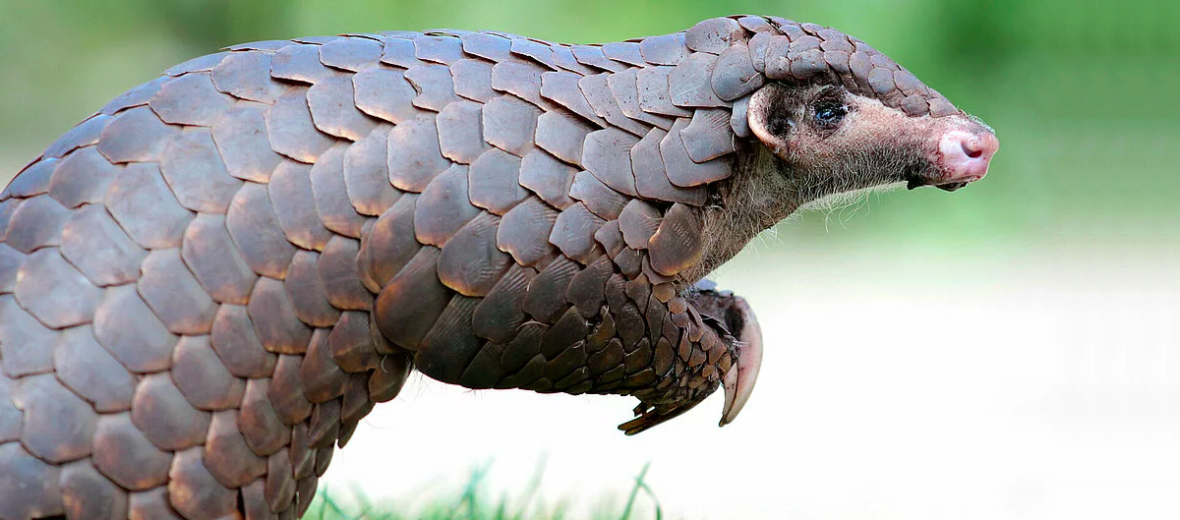
The Chinese pangolin, aka scaly anteater or Ling-Li (meaning hill carp or animal that digs through mountain), is hunted more than the elephant, rhino, or tiger. These critters are 1 of only 8 known species of pangolin. They can be found in Bhutan, China, India, Myanmar, Nepal, Thailand, and a few other countries. They like bamboo forests, coniferous forests, evergreen forests, tropical forests, agricultural fields, and also grasslands. Sadly, these unique animals are listed as Critically Endangered by the IUCN. This is due to habitat loss (at the hands of mining, commercial and urban development, and agricultural development), habitat division (via roads and railroads), vehicle strike (being hit by vehicles), hunting, trapping, avalanches, landslides, and climate change. Their numbers decrease daily.
First the Stats…
Scientific name: Manis pentadactyla
Weight: Up to 8 lbs.
Length: Up to 15 inches, plus up to a 20 inch tail
Lifespan: Up to 20 years
Now on to the Facts!
1.) Their order is called Pholodia. This means scaled animal.
2.) Chinese pangolins are nocturnal (active at night).
3.) These critters are solitary except during mating season.
4.) They are primarily terrestrial, but they can also climb trees and swim.
5.) Sometimes these critters will walk almost upright, on their hind legs.
But wait, there’s more on the Chinese pangolin!
6.) Chinese pangolins dig burrows that they use to sleep in the day and to keep safe from predators.
7.) Being insectivores, they primarily eat only ants and termites.
Did you know…?
Their thick scales make up to 20% of their body weight.
8.) Leopards and tigers prey on the Chinese pangolin.
9.) Not being aggressive, when threatened, they will curl up into a tight ball, revealing only their hard scales.
10.) Males fight for breeding rights to females from summer – autumn.
But wait, there’s still more on the Chinese pangolin!
11.) Females birth a single baby, called a pangopup. How cute is that?
12.) When still young, the pangopup will travel with mom, by clinging to her tail.
13.) When feasting on biting and stinging insects, the pangolin can close its ears, nostrils, and eyes to avoid being bitten or stung.
14.) Since these pangolins live at higher elevations than other pangolins, they will enter into a type of hibernation-like rest called torpor. The pangopup is born during this time.
15.) Since they possess no teeth, the pangolin will swallow sand and small stones, called gastroliths. These gastroliths are used to aid in the digestion of the food they eat.
Now a Short Chinese Pangolin Video!
This video talks about pangolins, in general.
Be sure to share & comment below! Also, check out the Critter Science YouTube channel. Videos added frequently!
Want to suggest a critter for me to write about? Let me know here.



